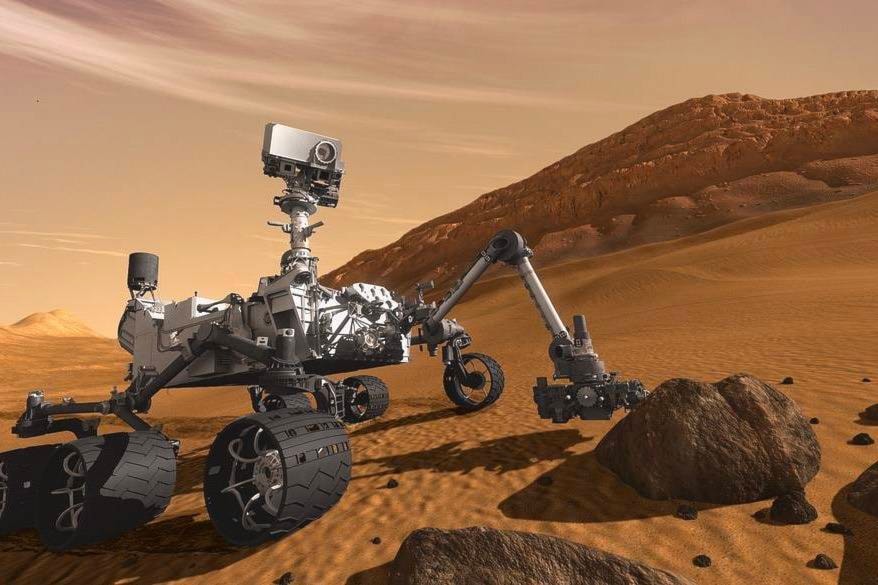The most powerful tool we have at the moment for searching for life on other worlds is to look for its chemical signatures in their atmospheres. There are chemicals that are associated with the processes of life, and which rapidly disappear unless they are continually topped up by living things. The Earth’s atmosphere is rich in oxygen. In our case, it is a by-product of photosynthesis in plants. Moreover, oxygen is so reactive that it will disappear rapidly by combining with surface minerals or anything containing iron or carbon. These losses, including the oxygen taken up by living things, are being dealt with by plant life. This is why the discovery of oxygen in the atmosphere of Mars is generating a lot of cautious excitement.
This oxygen was detected by the Curiosity rover, which is exploring the Gale Crater. The rocks in that area are sedimentary rocks laid down billions of years ago at the bottom of an ocean. At that time Mars was a warm, wet world, just like ours, and we know that on Earth, as soon as conditions became suitable, about four billion years ago, life appeared. Could this apply to Mars too?
The concentration of oxygen rises in the Martian spring, peaks in summer declines in autumn and sits at a low level in winter. This fits the idea of life burgeoning in the spring, thriving in summer, slowing down in autumn in preparation for lying dormant in the winter. It all fits the way life works here. It is tempting to jump to the conclusion that Mars, despite now being an arid, cold world with a very thin atmosphere, is still a living world, with living things descended from those warm, wet days, eking out an existence on today’s Mars. It would be an important discovery; our first solid evidence we are not alone in the universe. However, just because something happened in a particular way on Earth, we cannot just conclude things happen in the same way on other worlds.
Although Mars was very like Earth once, there are important differences now. The red planet’s atmosphere is now very thin, with a surface pressure about 0.4 per cent that of the Earth. The atmosphere is mostly carbon dioxide and nitrogen. Oxygen is present only in traces, whereas on Earth it constitutes 20 per cent or so of the atmosphere. The thin atmosphere presents almost no greenhouse effect, so the planet is cold and experiences enormous temperature changes between day and night. Finally, because of the thin atmosphere, solar ultraviolet radiation, which is blocked by our thick atmosphere, gets all the way down to the surface. If Martian life were like ours, the ultraviolet would be very dangerous to it. It would probably have to live underground.
There are ways oxygen might be produced by non-life processes, driven by that fierce ultraviolet radiation. The most likely is probably the breakdown of carbon dioxide or water vapour. Each carbon dioxide molecule contains one carbon atom and two oxygen atoms. Water molecules consist of two hydrogen atoms and one oxygen atom. Ultraviolet radiation can break up both these molecules, releasing oxygen. There is certainly a lot of carbon dioxide available, but the production process would still be too slow. Water vapour is a better candidate. In the Martian spring, the amount of water vapour in the air rises, and of course the longer days and the sun being higher in the sky means there is more ultraviolet available. However, there does not seem to be enough water vapour to explain the amount of oxygen, so this issue remains open. It would be really exciting if a future explorer turns over a rock and sees something wriggling away.
Mercury and Mars lie low in the southeast before dawn. Jupiter and Venus are very low in the southwest in the sunset glow, with Saturn low in the southwest. The moon will be new on the Nov. 26 and will reach its first quarter on Dec. 4.
Ken Tapping is an astronomer with the Dominion Radio Astrophysical Observatory near Penticton. Email: ken.tapping@nrc-cnrc.gc.ca
